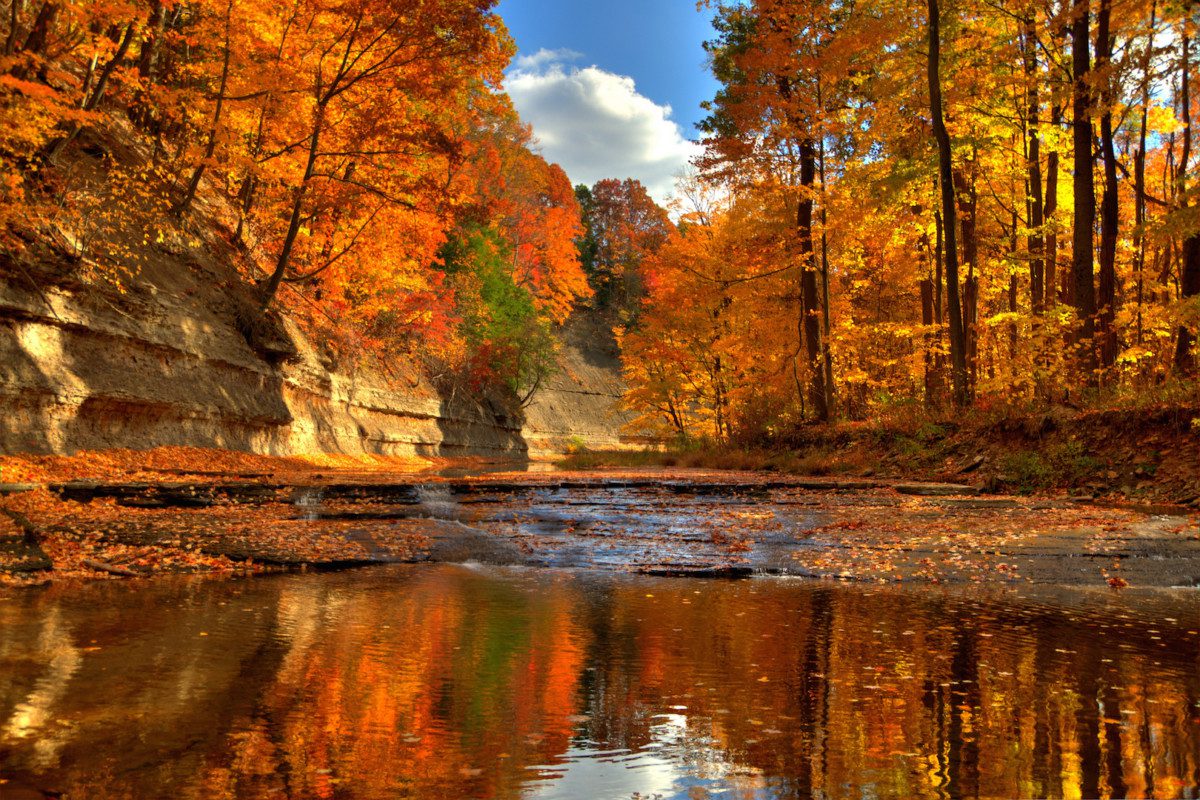
Nature Notes: Why Do Leaves Turn Colors in the Fall?
As the summer winds down, the days grow shorter, and the temperatures cool off, some of us look forward to the fall colors that sweep across Ohio.
Black tupelo leaves shift to a blazing red, tulip poplar leaves glow a bright yellow, and sweetgum leaves seem to display every color, turning yellow, orange, purple, and red. Autumn puts an important part of a deciduous tree’s seasonal growth cycle on display. It also creates one of the most beautiful times of the year.
You may stop to wonder: why do leaves turn colors in the fall when they are typically green the rest of the year? The primary reason comes down to chlorophyll, a tiny pigment molecule found within plants, cyanobacteria, and algae. Chlorophyll absorbs blue and red wavelengths but reflects green wavelengths. This is why it appears green to our eyes. Chlorophyll captures energy from the sunlight it absorbs. Through a process called photosynthesis, this captured energy is used to convert carbon dioxide and water into sugar. Sugar, in the form of glucose, serves as the food for the tree.
In the fall, trees understand environmental cues indicating that winter is coming. With less direct sunlight, sugar production begins to slow down. If deciduous leaves freeze, the resulting tissue damage makes them no longer able to photosynthesize. There is no point in keeping around leaves that will be dead come spring, so the tree sheds them. To accomplish this, the tree releases a hormone that encourages the leaves to be on their way.
Without the tree’s nutrient support, the chlorophyll in the leaves begins to break down and other pigment molecules step into the spotlight. The loss of chlorophyll reveals underlying yellow and orange pigments known as carotenoids. Carotenoids have been present in leaves all year but have been masked by bright green chlorophyll throughout the growing season. Another pigment, called anthocyanin, appears dark red to purple and is not attached to cell membranes like chlorophyll and carotene. Anthocyanins float around in the sap and are the result of light hitting residual sugars trapped in the leaves. These small changes in chemistry produce stunning visual results that make the autumn season a joy to witness each year.
